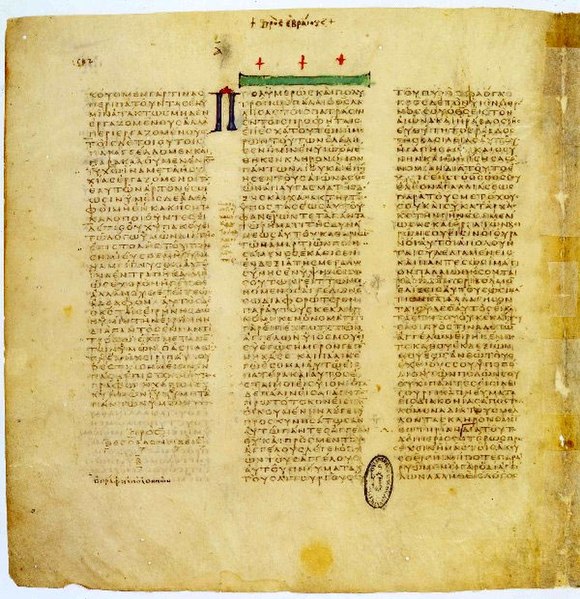Textual criticism is a branch of textual scholarship, philology, and literary criticism that is concerned with the identification of textual variants, or different versions, of either manuscripts (mss) or of printed books. Such texts may range in dates from the earliest writing in cuneiform, impressed on clay, for example, to multiple unpublished versions of a 21st-century author's work. Historically, scribes who were paid to copy documents may have been literate, but many were simply copyists, mimicking the shapes of letters without necessarily understanding what they meant. This means that unintentional alterations were common when copying manuscripts by hand. Intentional alterations may have been made as well, for example, the censoring of printed work for political, religious or cultural reasons.
Carmina Cantabrigiensia, Manuscript C, folio 436v, 11th century
Folio from Papyrus 46, containing 2 Corinthians 11:33–12:9
Luke 11:2 in Codex Sinaiticus
A page from Codex Vaticanus Graecus 1209 shows a medieval scribe (the marginal note between columns one and two) criticizing a predecessor for changing the text: "Fool and knave, leave the old reading, don't change it!"
Philology is the study of language in oral and written historical sources. It is the intersection of textual criticism, literary criticism, history, and linguistics with strong ties to etymology. Philology is also defined as the study of literary texts and oral and written records, the establishment of their authenticity and their original form, and the determination of their meaning. A person who pursues this kind of study is known as a philologist. In older usage, especially British, philology is more general, covering comparative and historical linguistics.
Cover of Indo-European Philology: Historical and Comparative by William Burley Lockwood (1969)





